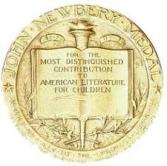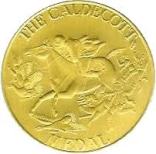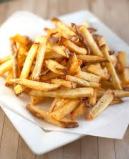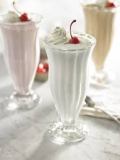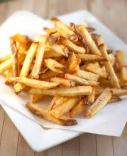
First, DUNCAN DORFMAN – Meg Wolitzer’s engaging, “The Fingertips of Duncan Dorfman” transported us into the world of competitive Scrabble. A member of our family plays competitive chess (a US Chess Federation “National Master” – we are kind of proud), so my son is familiar with the concept of board game competition. The book mentions scrabble tiles and racks over and over, so I brought some tiles and racks for my son to see, touch, try out (regretfully, NO interest). My son actually does like filling out book reports, and I was happy to see that he picked up on the main themes of this well structured book (ethics, friendship, the roller-coaster emotions of competition).

Then, DR. DOOLITTLE – My son and I are nearly through Hugh Lofting’s timeless adventure, “The Voyages of Dr. Doolittle”. Here is what we think: the pleasures of reading this book double when it is read out loud, allowing reader and listener to savor the poetic preposterousness of Lofting’s relentless imagination – delicious names and places like Popsipetel, Bag-Jagderag, Jip, Dab-Dab, Wiff-Waff, Don Ricky-Ticky. One more thing – the copy we are reading (a 2012 printing) includes spectacular vintage-style illustrations by Scott McKowen.

Then, DUCK DECOYS – “Encyclopedia of American Indian Contributions to the World”, complied by Emory Sea Keoke and Kay Marie Porterfield – a well edited resource we looked forward to opening every night. A better mom would have read aloud every single entry, but alas, my son had to settle for learning about one topic from each letter of the alphabet. Adobe, balls, canoes, duck decoys, earache treatments (well, that was gross), fringed clothing, gourds, hominy (I really built this one up with the hope of my son giving hominy a try – GIANT CORN ARE YOU KIDDING???? Who wants to sample some WAY FUN GIANT CORN??? Alas, no luck. I have no influence.), igloos, jicama, kayaks, lacrosse, maple syrup, nasturtiums, observatories, popcorn, quipus, rafts, salsa, tipis, umbrellas, vanilla, wampum, yams (we skipped X and Z).

Then, DESSERTS AT THE DINER (a story problem) – During summer months, Miss Michelle (famed pastry chef at the diner) bakes pies every morning: 4 apple pies, 2 apricot lattice (vocab) pies, 2 peach pies, 2 cherry lattice pies, 1 blueberry pie, 1 blackberry pie, 1 rhubarb pie, and 2 lemon meringue pies. Each pie gets sliced into 6 servings.
- If a tour bus with 80 passengers stops at the diner for lunch, would all passengers be able to enjoy a serving of pie?
- How many pie crusts does famed pastry chef, Miss Michelle, roll out every week?
- It takes 1 hour to bake a pie. The diner has 3 ovens and each oven can accommodate 4 pies at a time. How many hours does famed pastry chef, Miss Michelle, need to bake every pie? (answers at bottom of post)

Finally, DVOŘÁK DAZZLED – on the classical music front, it was Antonín Dvořák week at the STORIES AND STUDIES CENTER (my son’s bedroom):
- Slavonic Dance No. 1 in C major, composed around 1880. This is one of our favorites and it gets the performance it deserves by the Vienna Philharmonic. Side notes: 1) As per usual, conductor Seiji Ozawa’s hair is too wild to be ignored – we should all be so confident. 2) If you look closely, you will actually see a woman in the orchestra (back row, violin section). This video footage was posted in 2008 (so I don’t know when it was filmed) and I am sure the orchestra is trying to be more with the times, BUT REALLY.
- Humoresque No. 7, composed in 1894 – we love the way YoYo Ma, Itzhak Perlman, and conductor Ozawa transform this carefree little piece into a heartbreaker.
- Song to the Moon, from the opera, “Rusalka”, premier performance in 1901. Soprano Susan Karinski and the US Navy Band deliver an exquisite performance. ATTENTION EVERYBODY: Susan Karinski. Whoa.
Welcome to the best part of my day!
– Jane BH
(story problem answers: yes, 105 pie crusts, 2 hours)
